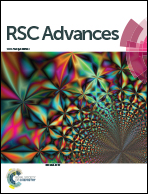Removal of acenaphthene from water by Triton X-100-facilitated biochar-immobilized Pseudomonas aeruginosa
Abstract
By adding the nonionic surfactant Triton X-100 and using biochar as an immobilization carrier, a Triton X-100-facilitated biochar-immobilized Pseudomonas aeruginosa (TFBIP) material was prepared using the sorption method and was used to treat acenaphthene in water. The results showed that a low concentration of Triton X-100 simultaneously promoted the sorption capacity of the biochar and the degradation activity of P. aeruginosa, thereby significantly enhancing the removal of acenaphthene from water by the immobilized P. aeruginosa material. Compared with the control without Triton X-100, a low concentration of Triton X-100 significantly increased the acenaphthene removal rate by 20–50%. The optimal conditions for preparing the TFBIP were a loading time of 24 h, the use of a bacterial suspension with a concentration of OD600 = 0.2, and a Triton X-100 concentration of 10 mg L−1. The optimized TFBIP material could efficiently remove acenaphthene from water at temperatures of 10–50 °C, pH values of 4.5–10.5, and NaCl concentrations of up to 0.2 mol L−1. The new TFBIP material can be used for the treatment of wastewater and may also be directly used for the remediation of soils contaminated with organic pollutants.



 Please wait while we load your content...
Please wait while we load your content...